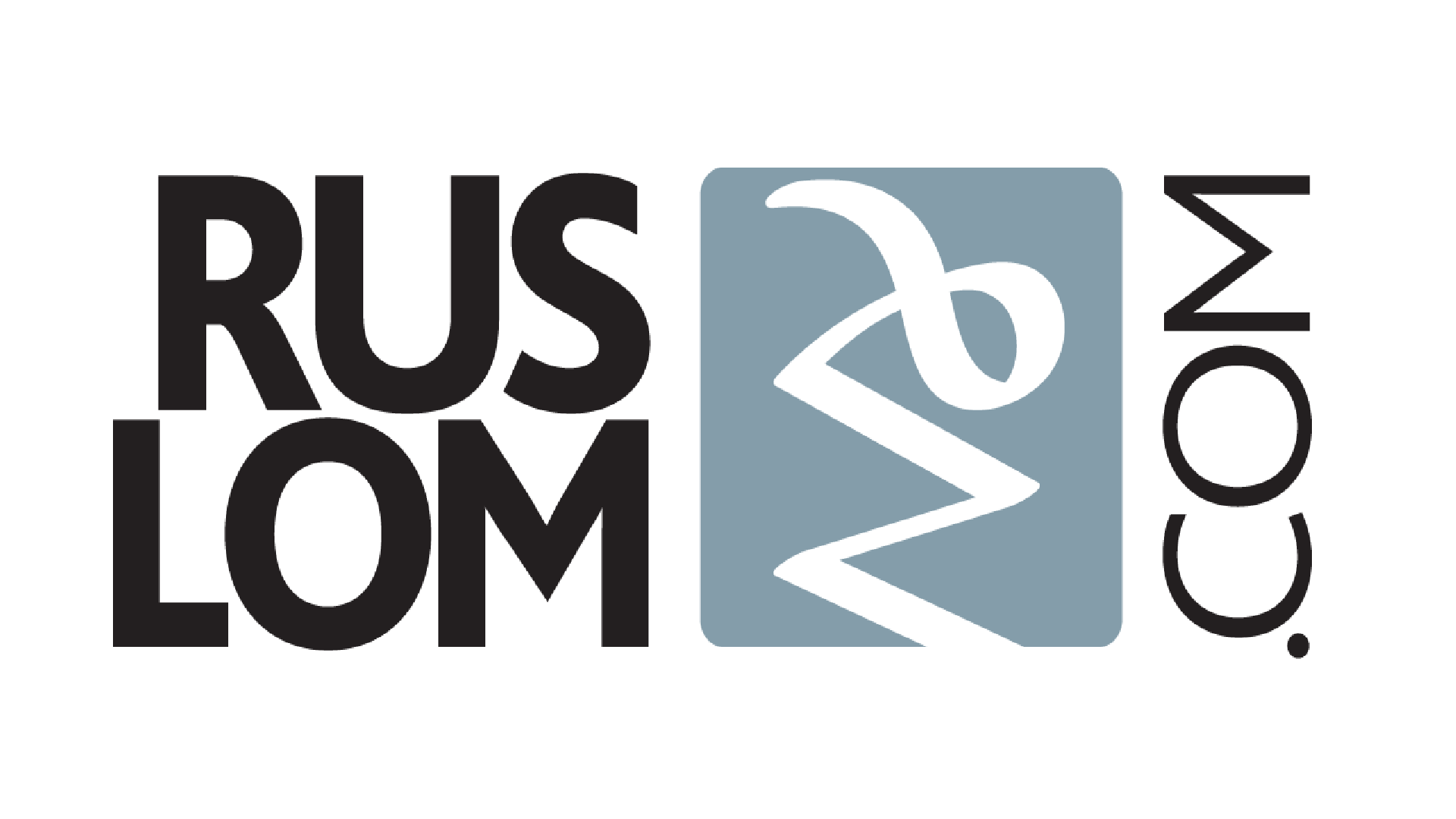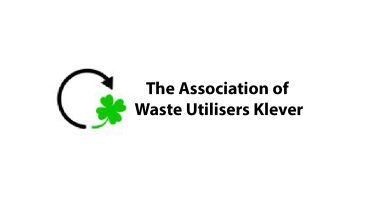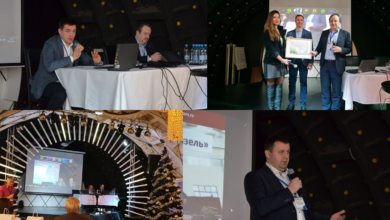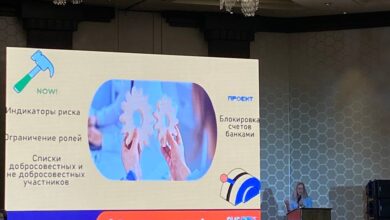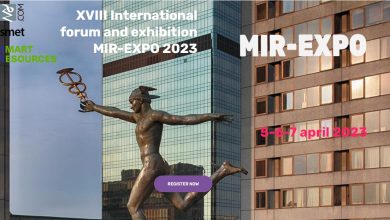The 18th International Forum Scrap of Ferrous and Non-Ferrous Metals and the Moscow International Recycling Expo 2023 opened in Moscow on April 5.
It is estimated that, as in previous years, the event will bring together over 1,000 market leaders in scrap and waste management, metallurgy, and related industries from around the world. Participants include representatives of the authorities, including the State Duma of the Russian Federation, the Government of Moscow, the Ministry of Industry and Trade, the Ministry of Natural Resources and Environment, the Ministry of Finance, the Ministry of Economic Development, the Federal Antimonopoly Service, the Federal Taxation Service, as well as representatives of Russian and international organisations.
The business programme started with the analytical session “Ferrous and Non-Ferrous Scrap Market in Russia and Worldwide” moderated by Denis Gorshkov, the columnist and news presenter of RBC-TV. The event included a discussion on a number of topics, including:
- Global ferrous scrap market;
- Analysis of volume and price indicators of ferrous and non-ferrous scrap market for the period;
- How to sell scrap and waste globally and increase the sustainability of business in the face of uncertainty;
- Ferrous and non-ferrous scrap market forecast for the period 2023-2030;
- New sales and purchase channels for ferrous scrap metals;
- Trends in steel, copper, and other scrap markets;
- Challenges and opportunities: impact of sanctions, reorientation of sales markets, information and technological import substitution, environmental trends;
- Non-obvious relationship between price indicators and availability of raw materials (scrap);
- Is there a price disparity in the market as the result of scrap export restrictions?
Alexander Ostrovsky, Head of Raw Materials Department at MetalIndex, opened the analytical session. He spoke about the main trends in the international scrap market, methods of forecasting scrap prices and answered questions from the audience. According to the speakers’ estimations, the global steel production, which fell to 1,832 million tonnes in 2022, will grow by 13% to 2,100 million tonnes in 2030. This trend should contribute to an increase in scrap consumption.
Another noteworthy forecast was the increasing share of electric steel in China. According to Alexander Ostrovsky, by 2025 it should amount to 15-20% of total steel production in the country. Thus, China is expected to see a decline in iron ore consumption and an increase in scrap consumption.
Andrey Korablin, founder of Smartscrap, continued the session. The speaker talked about the tools which help to sell scrap and waste globally and increase the sustainability of businesses in an uncertain environment.
In addition, the speaker highlighted the following industry challenges:
- Restriction of scrap metal exports;
- Reduced demand for steelmakers’ end-products, which reduces the need for scrap;
- Risks of non-payment;
- Constantly changing rules of the game in the market.
The co-speakers, Alexey Chizhikov, Head of Analytical and Research in Metallurgy and Raw Materials, Rusmet Rating Agency, and Bella Koshman, Senior Analyst, Rusmet Rating Agency told the audience about changes in the structure of scrap consumption by metallurgical plants and its competition with HBI.
One of the speakers of the analytical session was Victor Kovshevny, Director of the National Recycling Association RUSLOM.COM, who spoke about the main trends of the Russian scrap market and, in particular, about the structure of the available scrap fund, the cost of scrap procurement for different types of scrap, the role of individuals in sorting and returning scrap to recycling.
The speaker pointed out that the share of easily accessible scrap had decreased to 26%. At the same time, the cost of such scrap is significantly lower (15,910 roubles per 1 tonne) than that of moderately accessible (19,538 roubles per 1 tonne) and hard-to-reach scrap (21,896 roubles per 1 tonne).
An interesting feature is that in practice the price of scrap metal is determined by the plant, not by the scrap producer.
“This is the state of affairs not only in Russia, but all over the world – scrap is bought but not sold,” said Viktor Kovshevny.
According to the data presented by the speaker, in 2022 the generation of old scrap was 53.9 million tonnes and the collection was 14 million tonnes. At the same time the collection of old scrap in 2021 was 21 million tonnes with approximately the same amount of scrap generated. Uncollected scrap goes to landfills or is left in un-demolished buildings or machinery.
The next speaker was Kirill Raichenko, Head of Marketplace Vtorion. He said that when selling 2 thousand tonnes of scrap per year using the classic sales method, a scrap collector spends 430 thousand roubles more than when he uses a specialised digital service.
It is noteworthy that more than 200 supplies have been made through the Vtorion platform this year; sales volumes of the site increased by 58%.
Kirill Dozmarov, lawyer, Partner, and Head of the Antimonopoly Practice Group at Kulik & Partners Law.Economics and Tatiana Basova, Senior Economist and Block Leader at Kulik & Partners Law.Economics, spoke on the issues and consequences of scrap industry regulation.
The speakers discussed the impact that regulation of the scrap industry has on the economy and society as a whole, exchanged opinions on the issues associated with a lack of transparency and non-competitiveness in the industry and the consequences of inappropriate regulation, such as rising metal prices.
As the speakers pointed out, an important element for the Federal Antimonopoly Service in assessing a company is its pricing policy, and sales and purchase policy. That is why it is crucial to minimise risks in advance and form a reasoned proving position in the dialogue with the relevant authorities. It is important for business to speak to the government in a language it understands.
The business programme of the day was continued by the round table “Market Analysis of Precious and Rare Earth Metals and Electronic Scrap. Recycling of Lead Batteries, Lithium Batteries, and Other Power Sources”, organised by the National Recycling Association RUSLOM.COM in partnership with the National University of Science and Technology MISiS, Solution Law Office, and LiBA (Switzerland).
The round table was moderated by RBC-TV columnist and news presenter Denis Gorshkov, and co-moderated by Marina Uglovskaya, Executive Director of the Association RUSLOM.COM.
Participants were presented with an analysis of price and volume indicators of the precious metals scrap and waste market in Russia; a forecast considering the restrictions imposed on the domestic and foreign markets; trends in legislation in the field of precious metals scrap management; and international trends in the recycling of waste from electrical and electronic equipment (WEEE).
Other important topics of the round table were:
- Sources of rare-earth metals formation. Recovery of precious rare-earth metals from secondary raw materials, catalysts, and electronics. MISiS Institute technologies.
- Challenges in operation and recycling of lithium, lead, and other types of batteries and energy sources. European experience in infrastructure and standards development.
- Materials of the future in developed countries: rare-earth metals and vanadium steels.
Nikolai Dorogov, Doctor of Economics, Professor, Deputy Director of the Higher School of Tariff Regulation at the Plekhanov Russian University of Economics spoke about how the use of indices could help organisations make informed and efficient decisions in different areas of activity. In his presentation the speaker emphasised that the development of indices and their use is an important step towards more efficient and transparent management of business and public resources.
Maxim Mikhailov, Commercial Director of NPO AURUS LLC, presented his report on the current state of the market for electronic scrap and waste of precious metals in Russia. The speaker drew attention to the price and volume indicators of the market and gave a forecast based on the restrictions imposed on the domestic and foreign markets.
The speaker emphasises that, to date, most companies involved in e-waste recycling operated with a low content of useful fractions, which affects the efficiency of printed circuit boards collection and recycling. Assessing the efficiency of collecting and recycling PCBs with low useful fractions is one of the most important challenges in the e-waste market. Currently, there are several approaches to address it, such as the use of special technologies.
The programme continued with Anna Stern, Legal Director of Euromet LLC and Member of the Committee on Scrap and Waste of Precious Metals (SWPM) Management at the Association RUSLOM.COM, who presented the main trends in legislation on scrap of precious metals management.
According to the speaker, the first important trend is the prohibition of export of scrap of precious metals outside the Russian Federation for a period of 1 year 8 months. This means that companies involved in this field will have to concentrate on the domestic market.
The second trend is the regulation of the internal market from January 9, 2023. In order to facilitate the transport of SWPM, the relevant changes have been made. Moreover, the concept of “SWPM handling (processing)” has been changed with effect from 1 March 2024. These changes will lead to improvements in the efficiency of the companies involved in the handling of SWPM.
Also in the near future, there are plans to change the licence to purchase SWPM and to change the term “SWPM”.
Viktor Haefeli, owner of LiBaService24 GmbH, presented on the topic “From Waste to Profit: Current Trends in WEEE and Battery Recycling”.
The speaker began his report with an overview of the situation in the Russian Federation and talked about the state of WEEE production in dynamics. The expert also discussed with the round table participants the current situation and trends in battery recycling, the opportunities and risks of electric vehicles.
In addition, the speaker drew attention to the European experience and showed the whole production and economic chain of the extraction of minerals, chemical elements, production and recycling of batteries. He stressed out the importance of recycling and spoke about current trends in this field.
The third block of the day’s business programme included a conference “Scrap of Stainless and Special Steels”.
Conference participants discussed the global and Russian stainless-steel markets, export-import issues of stainless and special steels in Russia, production and consumption, market forecasts in Russia, and other topical issues.
The conference was opened by Victor Tarnavskiy, Head of the Information and Analysis Centre of the Metal Supply and Sales Magazine.
The speaker revealed that 55.26 million tonnes of stainless steel had been smelted globally in 2022, down by 5.2% from a year earlier. However, according to the forecast of MEPS consulting company, this year’s smelting should increase to 60 million tonnes. Meanwhile, growth on this scale looks unlikely, as China’s stainless-steel production started to increase again in 2022 and the industry hit a record high in February 2023. However, demand for stainless steel in China is not as high as desired. In this connection, Tsingshan Group and Jiangsu Delong have built two modern plants in Indonesia with a combined capacity of 6 million tonnes per year, even though stainless-steel production in Indonesia has declined slightly since reaching a peak in 2021.
According to the International Nickel Study Group (INSG), the global nickel market is in a state of slight oversupply: 108.9 thousand tonnes in 2022 and about 170 thousand tonnes in 2023; nickel production is growing at a very high rate, with a projected 11.5% growth in 2023. At the same time, production of NPI (nickel pigment) and nickel sulphate is growing the fastest, while refined metal production lags behind.
Anastasia Nesterova, Senior Analyst at Rusmet Rating Agency gave a presentation on “Stainless Steel. Russian Foreign Trade Statistics 2013-2022”.
During her speech, she shared some interesting data. Thus, according to her, turnover of stainless steel in 2022 was 399.81 thousand tonnes, with imports amounting to 98% and exports 2%. Semi-finished products were imported in the amount of 0.82 thousand tonnes, worth $3,939,000. At the same time, exports amounted to 0.26 thousand tonnes, worth $425,000.
Long steel products were imported in the amount of 27.73 thousand tonnes, worth $125,646,000. However, exports amounted to only 0.58 thousand tonnes, worth $5,900,000. Pipe products were imported in the amount of 30.44 thousand tonnes worth $195,301,000. Exports, on the other hand, amounted to 5.96 thousand tonnes, worth $168,280,000.
In volume terms, the decline was 25%, while in value terms imports decreased by 5%, as a number of items in the previous year could see an increase in the customs value of imports.
Victor Kovshevny, Director of the National Recycling Association RUSLOM.COM, continued the conference. The speaker analysed the recent decline in scrap collection volumes. He pointed out that this situation was due to the difficulties businesses face in operating under multiple restrictions and the lack of necessary support.
Thus, according to the speaker, by 2025 the scrap collection will decrease relative to 2021 if the personal income tax on scrap is not abolished, and sanctions and restrictions on scrap exports are remain in place.
The day ended with a meeting of the Committee on the Self-Regulated Organisation Members’ Rights Protection and Legal Risks of the Association RUSLOM.COM, chaired by Lev Liokumovich (Vtorchermet NLMK LLC).
About the Association
The National Recycling Association RUSLOM.COM is the only official industry association of scrap processors in Russia with the national self-regulatory organisation status. The Association members are more than 300 companies from among the procurement divisions of metallurgical plants, independent processors, exporters and traders, which are leaders of the market and government programmes. Members of the National Association RUSLOM.COM own 100% of the shredding capacity in Russia and 75% of the market in terms of consumption of steel scrap in Russia.
The Association’s mission is to ensure the resource and environmental security of Russia by means of returning recoverable materials to the economic turnover.
The Association’s goal is to create a high-tech metal recycling industry in Russia.
Press-service of the National Recycling Association RUSLOM.COM
Tel. +7 (499) 490-49-28
Mob. tel. +7 (903) 363-5393
Email a.kondratiev@ruslom.com
